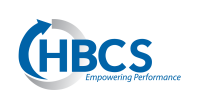Earlier this month, CMS proposed changes to the Medicare Physician Fee Schedule (the “PFS Proposed Rule“) and Quality Payment Program (the “QPP Proposed Rule“) with the goal of “modernizing Medicare and restoring the doctor-patient relationship.” The proposed changes achieve this goal by streamlining the billing process and reducing the amount of paperwork providers face, empowering providers to maximize use of electronic health record systems, and ultimately, enabling providers to spend more time with their patients.
There is a lot contained in the proposed rules. In this post, we highlight how the proposed rules promote access to virtual care, reduce payments for new drugs under the Part B program, and other key changes.
Telehealth Gets a Boost
Some very good news for the telehealth community can be found amidst the more than 1,400 pages of the PFS Proposed Rule. Finally, CMS acknowledges just how far behind Medicare has lagged in recognizing and paying for physician services furnished via communications technology.
Virtual Check-In
The longstanding barriers to Medicare payment for telehealth visits based on the location of the patient and the technology utilized could soon give way to payment for brief check-in services using technology that will evaluate whether or not an office visit or other service is warranted. CMS proposes to establish a new code to pay providers for a virtual check in. For many telehealth providers, the payment proposal will not go far enough since the new code can only be used for established patients. CMS notes that the telehealth practitioner should have some basic knowledge of the patients’ medical condition and needs that can only be gained by having an existing relationship with the patient.
Store and Forward
In other good news, the PFS Proposed Rule creates a specific payment code for the remote professional evaluation of patient-transmitted information conducted via pre-recorded “store and forward” video or image technology. CMS recognizes that the progression of technology and its impact on the practice of medicine in recent years will result in increased access to services for Medicare beneficiaries. CMS is seeking comment as to whether these type of telehealth services could be deployed for new patients as well as existing patients.
The Bipartisan Budget Act of 2018
The Proposed Rule also implements important expansions of telehealth services included in the Bipartisan Budget Act of 2018 (“BBA of 2018”) passed last winter. The BBA of 2018 made way for end-stage renal disease patients to receive certain clinical assessments via telehealth beginning in January 2019. Under the PFS Proposed Rule, CMS proposes to amend its regulations to add in the home of the patient as the “originating site.” Under existing Medicare rules, the patient’s home is not an appropriate “originating site” for a telehealth visit.
Reduction in Payments for New Drugs Under Part B
The PFS Proposed Rule also includes an attempt to lower drug prices by reducing payments for new drugs under the Part B program. CMS has proposed that effective January 1, 2019, for new drugs and biologicals that are currently reimbursed utilizing the wholesale acquisition cost (“WAC”) of the drug or biological plus 6 percent, will instead receive a reduced add-on payment of 3 percent. Because the change is limited to new drugs that are largely expensive, physician-administered, and infused or injected, such as chemotherapy and rheumatoid arthritis treatments, the financial impact of the proposed reduction could be significant.
Typically, Medicare pays for most Part B drugs and biologicals at a rate commensurate with the average sales price (“ASP”), plus a 6 percent add-on payment. However, in certain specified situations, WAC is substituted for ASP, largely because an ASP may not yet have been calculated. Those situations are: (1) for new drugs or biologicals during the first quarter of sales when the ASP is unavailable; (2) for single source drugs when the WAC plus 6 percent is less than the ASP plus 6 percent; and (3) where Medicare Administrative Contractors (“MACs”) determine pricing for drugs which do not appear on the ASP pricing files and for new drugs.
CMS believes that WAC-based payments may result in higher payments for the same drug than the use of the ASP methodology, especially when it comes to new drugs. The ASP takes into account the discounts that are typically applied to a drug or biological, in addition to chargebacks, rebates or other reductions to price. However, as the WAC is the list price for the drug or biological, those discounts and other price reductions are not considered in the WAC. As a result, CMS theorizes that WACs do not reflect the actual market prices for drugs.
The WAC reduction in the PFS Proposed Rule only applies to new drugs where the ASP is not yet available. In the other situations outlined in the existing rule, the reimbursement formula will continue to use the WAC plus a 6 percent add-on payment. Once the manufacturer has enough information to calculate and report an ASP, the standard Part B reimbursement rate of ASP plus 6 percent will become effective (except for situations where CMS has separately reduced that reimbursement rate through separate rule changes). The Medicare Processing Claims Manual will also be updated if the proposed rule is finalized to allow MACs to use a reduced reimbursement of the WAC plus 3 percent, instead of the current add-on payment of 6 percent, when the WAC is used to determine the price of new drugs. However, the proposed WAC reduction in Part B will not impact single source drugs where the payment rate is statutorily set at 6 percent.
CMS believes that the proposed changes will help reduce copayments and out of pocket expenses of Medicare beneficiaries and help counteract the impact of increasing launch prices for new drugs and biologicals. This may only be the first of many proposals to come impacting drug reimbursement in Medicare and Medicaid.
Other Changes
CY 2019 Physician Fee Schedule Changes
In response to public feedback, the proposed changes seek to reduce the burden of documentation required for payment of Evaluation and Management (“E&M”) codes by leveraging EHRs. Specifically, the proposal:
- Offers flexibility in documentation for E&M office visits,
- Reduces unnecessary physician supervision of radiologist assistants for diagnostic tests, and
- Removes functional status reporting requirements for outpatient therapy.
CY 2019 Quality Payment Program Key Changes
The Quality Payment Program (QPP) offers two pathways for providers: the Merit-based Incentive Payment System (MIPS) and the Advanced Alternative Payment Models (Advanced APMs). The proposed changes in the QPP Proposed Rule remove MIPS measures considered “low-value” or “low-priority” based on provider feedback and overhaul the Promoting Interoperability measures to support patient access to health information and greater EHR interoperability.
Medicare Advantage Qualifying Payment Arrangement Incentive (MAQI) Demonstration
CMS also proposes a program called the Medicare Advantage Qualifying Payment Arrangement Incentive (MAQI) demonstration. This demonstration would allow a waiver of MIPS reporting requirements and payment adjustments for providers who participate in Medicare Advantage arrangements that are similar to Advanced APMs.
Next Steps
Comments regarding all of the proposed changes are due by September 10, 2018.
About the Authors: Ellen Janos, Ellyn Sternfield, Bridgette Keller, and Matt Mora are attorneys in the health law section of Mintz Levin. A version of this blog post previously appeared on Mintz Levin’s www.healthlawpolicymatters.com blog.















